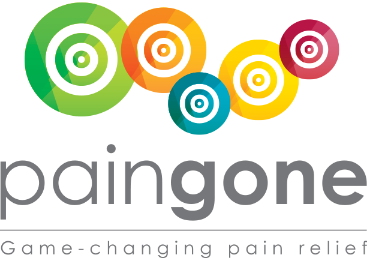
Nov 4, 2021
Paingone
Can Pet Ownership Help Those with Chronic Pain?
A recent opinion piece published by the Pain News Network addresses the issue of pet ownership for individuals suffering from chronic pain. The article outlines the many ways in which having a pet can positively impact those who suffer from chronic, debilitating pain.
Chronic pain can lead to other problems, including depression and anxiety, which may respond well to having a companion animal in the home, but recent research also indicates that a pet can reduce the actual level of pain felt by many people. Pets provide comfort, activity, distraction, affection, and love.
Activities such as play and going for walks help reduce pain by encouraging movement, which is often instrumental to reducing pain and inflammation. It keeps joints from getting stiff and improves muscle tone. The distraction provided by these activities also takes the mind off of the pain. Love and comfort are also powerful tools against pain, as they trigger the release of the body’s endorphins and reduce levels of cortisol, the stress hormone.
Dr. Steven Richeimer, USC’s Keck School of Medicine’s professor of anesthesiology, explained in Spine Universe, “In my practice as a pain management specialist, I’ve heard numerous accounts of pets improving the lives of patients living with chronic pain and diminishing the depression that often accompanies it. There’s no doubt in my mind that having a pet — or interacting with a trained therapy dog or cat — can improve a pain patient’s quality of life. Animal companionship is a natural pain reliever, and a substantial body of research supports this theory.”
Smart Chairs May Reduce the Risk of Low Back Pain
Office workers and anyone who spends hours sitting at a desk each day often experience low back pain. While getting up to move and stretch can help prevent this, most people don’t remember to do this until after the pain has set in. At this point, it’s challenging to treat, and the pain can linger for quite a while.
Tohoku University researchers have devised a way to predict low back pain before it starts so that individuals can prevent rather than respond to discomfort. The researchers have designed a system of pressure sensors that detect movements and analyze them. The sensors are embedded in otherwise conventional office chairs.
Real-life scenarios using the sensors and tracking the responses of users helped them fine-tune the system. The researchers discovered common patterns in posture and sitting behaviors that led to the development of low back pain. Studying these helped them pinpoint specific body trunk motions that prevented the progression of pain. Using the starting point of a user’s day, the smart chair can determine when back pain may set in. The researchers hope to continue their research and expand it to include detection of neck stiffness and headaches as well.
Pain Reprocessing Therapy Shows Promise for Chronic Pain
Pain Reprocessing Therapy teaches patients to “retrain” their brains, so that perceived pain signals received by the brain aren’t as threatening. Part of the therapy focuses on taking patients through painful movements to re-evaluate the sensations they feel. Emotional pain management is also addressed during therapy sessions.
Pain Reprocessing Therapy (PRT) shows promise for helping millions of people who suffer from chronic low back pain. In a study funded by the NIH’s National Institute on Drug Abuse (NIDA), the National Center for Advancing Translational Sciences, and the National Institute of Mental Health (NIMH), study participants were treated with PRT, a placebo injection, or continued with their current therapies. After a month of treatment, 66% of those receiving intensive Pain Reprocessing Therapy said they had little to no pain, an outcome that was maintained even after a year. Pain reduction with placebo or traditional treatment modalities ranged between 10% and 20%.
The most fascinating result in the study was that PRT changed the way the brain processes pain, with a substantial reduction in brain activity in areas associated with processing pain signals.
Dr. Yoni Ashar, formerly of the University of Colorado and now at Weill Cornell Medical College, explained, “For a long time, we have thought that chronic pain is due primarily to problems in the body, and most treatments to date have targeted that. This treatment is based on the premise that the brain can generate pain in the absence of injury or after an injury has healed and that people can unlearn that pain. Our study shows it works.”
The Pain/Dream Connection
The connection between chronic pain and lack of sleep or poor sleep quality has long been acknowledged. However, according to a recent article in Psychiatric Times, there is also a connection between pain and bad dreams or nightmares. While nightmares are frequently experienced after surgery for short periods, this isn’t viewed as a long-term problem. It is usually attributed to anxiety and the aftereffects of anesthesia and is quickly resolved.

Individuals suffering from chronic, long-term pain have a different experience. Controlled observations indicate that while less than 10 percent of individuals regularly suffer from bad dreams, 44% of those suffering chronic musculoskeletal pain report recurring nightmares or unpleasant dreams. Those suffering from chronic migraines also report a higher incidence of bad dreams, sometimes during a headache and sometimes during the prodrome phase before the onset of pain.
The sleep disruption of bad dreams can have a domino effect on emotional well-being, alertness during waking hours, and the ability to function well. For those suffering from chronic pain, repeated bad dreams also contribute to anxiety and fear for their mental health. Studies are continuing into the possible link between chronic pain and bad dreams, as they can create a vicious cycle of pain and fatigue that feed off each other.
This Week’s Pain Fact: Studies have shown that red-headed people have a higher general pain tolerance than others but are more sensitive to specific kinds of pain. For instance, ginger-haired people tend to be more sensitive to pain caused by heat or cold but less sensitive to pain from needles or electric shocks. Redheads respond better to opioid pain medications and don’t require as high a dose for effective pain relief. However, redheads are also more difficult to sedate and require more significant amounts of anesthesia.
Is Paingone helping your patients and your practice?
Tell us your success story.
A robust retail strategy is essential to growing your practice.
You only have so many hours a week available for appointments. The fastest way to increase your bottom line is to incorporate profitable products that generate repeat business and build your reputation as a medical professional. That’s where Paingone comes in.
Contact us below to learn more about our products, wholesale pricing and how Paingone can benefit your practice.

